(Author’s note: The term “speculative fiction” is a high-falutin’ term meant to a) impress college professor-types when you really mean “science fiction,” or b) a term to encompass the three genres of the fantastic — science fiction, fantasy, and horror — all at once. Personally, I prefer “sci-fi” or “sf” in everyday speech as my shorthand term for both science fiction proper and the speculative fiction combo. I’ve also used the now-discouraged term “Mormon” throughout instead of formulations like “a Church of Jesus Christ of Latter-day Saints vampire story” for obvious reasons.)
I.
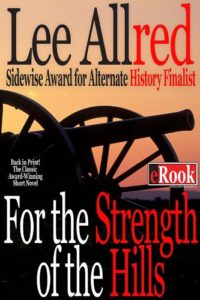 My fiction writing career has been like that old Shasta cherry cola commercial, two rickety trucks careening around until they finally collide and create something new. From my very first pro sale (“For the Strength of the Hills”), I keep getting Mormon chocolate in my national market fiction peanut butter. Then I cross the aisle to bring my national market storytelling techniques, sensibilities, and pop culture mashups over to my Mormon market fiction to fashion a two, two, two mints in one aesthetic.
My fiction writing career has been like that old Shasta cherry cola commercial, two rickety trucks careening around until they finally collide and create something new. From my very first pro sale (“For the Strength of the Hills”), I keep getting Mormon chocolate in my national market fiction peanut butter. Then I cross the aisle to bring my national market storytelling techniques, sensibilities, and pop culture mashups over to my Mormon market fiction to fashion a two, two, two mints in one aesthetic.
It’s not every writer who relitigates the anti-Mormon narrative of Sherlock Holmes’ A Study in Scarlet in a national market mystery anthology or recasts the account of Joseph Smith’s purchase of the Pearl of Great Price scrolls as a mummy monster movie in a Mormon Lit contest or slips in a Johnny Lingo gag panel in a superhero comic book.
That sounds crazy, I know — certainly not the optimum career path! — but from the very start I took the stand that Catholic and Jewish writers didn’t have excise or airbrush their culture, history, or heritage out of their national market fiction; Mormons shouldn’t have to either. Conversely, readers don’t have to be Episcopalian-universalists to enjoy Madeleine L’Engle’s A Wrinkle in Time or Catholic to enjoy J.R.R. Tolkien or C.S. Lewis or a Father Dowling mystery. You don’t need to be deeply steeped in the theology of Orthodox Judaism (or even orthodox baseball) to get a kick out of the movie Yankles (filmed in of all places Springville, Utah).
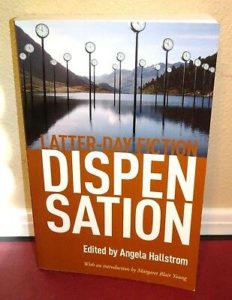 As far as career paths go, I’ve gotten by. I’ve published in top national market genre magazines, scripted Marvel and DC Comics, and quite a number of Mormon market venues, including providing the representational science fiction story in the MoLit survey anthology Dispensation.
As far as career paths go, I’ve gotten by. I’ve published in top national market genre magazines, scripted Marvel and DC Comics, and quite a number of Mormon market venues, including providing the representational science fiction story in the MoLit survey anthology Dispensation.
Still, it’s one thing to slip a single chocolate-peanut butter story past an editor in a one-off publication. It’s quite another to ask a publisher to do an entire collection of my dual-citizenship stories.
That’s why I’m quite gratified Hemelein Publications has seen fit to include a collection of my short fiction as part of its Legacy of the Corridor series that highlights established speculative fiction authors from the Intermountain West’s Mormon settlement corridor, including D.J. Butler (Volume 1 published last July) and Michael R. Collings (Volume 7 due out this October).
My volume, Volume 3 entitled Down the Arches of the Years, is due out on or about April 19th. (Amazon already has a pre-order page up. Only for the eBook version as last I checked, but there’ll be a print edition released as well.)
Don’t worry if reading down the table of contents, you count a selection of “only” twelve stories — half the number of stories in previous Legacy volumes. You’ll get your money’s worth. The print version runs to nearly 500 printed pages. Arches is heavy with longer-form novelettes and novellas (roughly twice and three times respectively the standard size of a short story) I’m partial to writing. In fact, the two new stories Hemelein commissioned expressly for the volume are both 20k word novellas. Total fiction word count is over 100k, the size of a pretty fat novel.
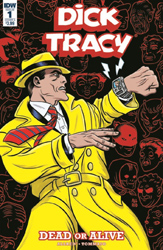 In addition to a mix of original and reprint stories in Arches, you’ll find a mix of national and Mormon market stories (cue the Shasta trucks!), a mix of science fiction, fantasy, and horror genres (hence the term speculative fiction encompassing all three), and a mix of tone with both lighter pieces and some quite dark ones as well. (Fun fact: this milquetoast Mormon has had not one but two Batman scripts outright rejected for being too dark, not to mention a Dick Tracy script to boot. Considering the publication histories of both characters, that’s quite the accomplishment.)
In addition to a mix of original and reprint stories in Arches, you’ll find a mix of national and Mormon market stories (cue the Shasta trucks!), a mix of science fiction, fantasy, and horror genres (hence the term speculative fiction encompassing all three), and a mix of tone with both lighter pieces and some quite dark ones as well. (Fun fact: this milquetoast Mormon has had not one but two Batman scripts outright rejected for being too dark, not to mention a Dick Tracy script to boot. Considering the publication histories of both characters, that’s quite the accomplishment.)
Rounding things off, Arches includes an introductory author’s essay going into how the book was fashioned, why a story theme of historical settings was chosen, and why and how I chose the first lines of Francis Thompson‘s 1893 poem “The Hound of Heaven” as both epigram and title for the volume.
I’m particularly pleased that three of my most recent stories made it into Arches: “Jesting Pilate,” Lump of Clay,” and “New England’s God.” There’s a truism among professional writers that an author is the worst judge of their own stories, but I still think these three are among my strongest pieces. The venerable review site Tangent Online gave “New England’s God” their highest rating of three stars in their 2021 Recommended Reading List.
I hope you enjoy it.
II.
Question and Answer Time
Q: I’m not a science fiction reader. I’ve never read any of your work. What’s it like?
A: Thanks to the Mormon Lit Blitz site, you can read a few sample stories for free. Here’s a serious-tone story and here’s a comedic fluff piece. Keep in mind that besides being explicitly Mormon stores these are flash fiction pieces and very truncated. My usual national market pieces are more developed. This one’s a bit longer and thus more representative of my usual work.
Q: I read a lot of science fiction but not your stuff yet. What other sf authors are you similar to?
A: Wanting a recommendation algorithm, are we? Tough call. I’m not as deliciously densely gothic as say D.J. Butleror rollicking adventure pulpy as Larry Corriea. Maybe you could describe my work as introspectively adventure-y? The serious-tone stories at least.
My earlier work drew on Connie Willis, Tim Powers, and Harry Turtledove for inspiration. My work since returning from three tours in Iraq has drawn heavily on David Drake’s flat affect and aspects of Barbara Hambly’s James Asher series, if that’s any help.
A prototypical Lee Allred main protagonist is scarily similar to the Neal Burnside character in The Sandbaggers, which undoubtedly is of absolutely no help at all (unless you’re a late middle-age Brit who remembers the show on telly).
Q: What’s the craziest thing you’ve ever done as a writer?
A: Besides getting into the crazy business to begin with? Um, maybe placing a non-ironic ode to coal at an online wilderness poetry website? Talk about the ultimate “you got chocolate in my peanut butter” moments.
Or maybe it was faking a “lost” Emily Dickenson poem in one of the brand-new stories in Arches. The exact Dickenson poem I needed for a scene is (unbelievably but true!) still under copyright so I had to fake one.
Q: What’s your writing schedule?
A: I’m an early riser. No, seriously. I mean early. I begin writing as soon as I get up (between 3 and 4 am). I like writing when it’s quiet and dark. I write until about 8 am, then take a power nap. Then I finish up for the day (the writing portion of it anyway) at around 11 am. (My bedtime’s around 9 pm, if you’re wondering how the math works out.) I typically write six days a week, Monday through Saturday, giving myself Sundays off.
Q: What’s your daily output?
A: My average output is 1k words (four typed manuscript pages). I usually hit that goal. Good days when things are going right maybe 2k (eight pages). Bad days I struggle to make 250 words (one page). Under deadline crunch I sometimes hit 4k (sixteen pages) but am pretty useless the next day.
Q: What do you write with? Pencil? Crayons? Computer? If a computer what software?
A: Strictly computer. A lot of writers are turning to fancy-schmancy writer software like Scrivener or even Hollywood scripting tools like Final Draft. I use Microsoft Office Word. I use plain vanilla Notepad that comes free with Windows (since Windows 95) for jotting down plotting notes, etc.
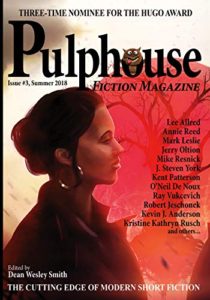 Q: What music do you listen to when you write?
Q: What music do you listen to when you write?
Silence.
Q: You seem to only write short fiction. Don’t you like novels? Have you ever tried writing one?
A: Short stories and novels are two separate writing skills. Some writers excel at both. I’ve yet to master novel length to my liking.
I’m in the midst of some long form projects, but nothing’s ready yet. One of the things I’m trying in an effort to master the form is an “episodic novel” — a novel built by sequencing interconnected short stories. The two new novellas in Arches are actually stories 1 and 4 in a projected 5-story episodic novel that stars the Tafford character.
Q: You haven’t mentioned your cat. All sci-fi authors have cats.
A: I don’t.
Q: Where can I find you on social media?
A: My antiquated hand-coded html webpage is leeallred.com. You can check out my bib-lee-ography there for a barebones list of my published works.
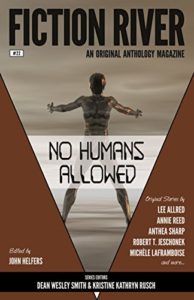 Twitter’s the only social media platform I use, but Twitter’s automated spam bots have somehow mistakenly concluded I’m Russian spam and keep locking my @lee_allred account faster than Twitter’s human employees can unlock me. It’s been a while since I’ve been able to tweet. More writing time for me, I guess.
Twitter’s the only social media platform I use, but Twitter’s automated spam bots have somehow mistakenly concluded I’m Russian spam and keep locking my @lee_allred account faster than Twitter’s human employees can unlock me. It’s been a while since I’ve been able to tweet. More writing time for me, I guess.
Q: Any new projects on the horizon besides the Arches story collection?
A: I just had a short story published in Fiction River recently. Have some more stories sold but awaiting publication. As for bigger projects, keep watching the skies!
About the author
Lee Allred’s short fiction has appeared in prestigious national publications like Asimov’s and Pulphouse magazines as well as dozens of short-fiction anthologies. Primarily known for his science fiction/fantasy/horror stories/alternate history genre work, Lee’s also published in the mystery and western fields. He’s scripted comic books for DC (Batman ’66), Marvel (Fantastic Four), and IDW Comics (Dick Tracy).
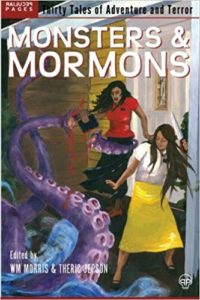 Lee’s an active contributor to Mormon fiction venues, with published stories in Dispensation, Mormons & Monsters, States of Deseret, the Mormon Steampunk anthologies from Immortal Works, and Mormon Lit Blitz.
Lee’s an active contributor to Mormon fiction venues, with published stories in Dispensation, Mormons & Monsters, States of Deseret, the Mormon Steampunk anthologies from Immortal Works, and Mormon Lit Blitz.
Lee’s debut professional story, “For the Strength of the Hills,” won the international Writers of the Future contest and was named a finalist for the Sidewise Award for Alternate History. As an undergraduate at BYU, he won the 1991 Mayhew contest (not the real Mayhew, just the genre Specialty Division, but hey, a hundred bucks is a hundred bucks). He’s been a frequent Mormon Lit Blitz contest finalist.
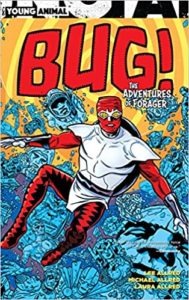 Legendary sf editor Dean Wesley Smith insists that “[Lee] always has a completely different way of looking at the world.” The late Dave Wolverton described Lee’s work as “moral dilemmas coupled with powerful conflicts.” Publisher’s Weekly simply termed it “provocative.” Diamond Comics Previews has tagged Lee’s comic book work as “Certifiably Cool.”
Legendary sf editor Dean Wesley Smith insists that “[Lee] always has a completely different way of looking at the world.” The late Dave Wolverton described Lee’s work as “moral dilemmas coupled with powerful conflicts.” Publisher’s Weekly simply termed it “provocative.” Diamond Comics Previews has tagged Lee’s comic book work as “Certifiably Cool.”

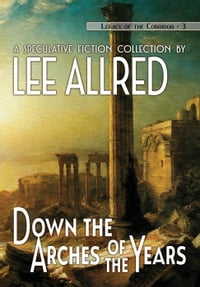
.
Lee is the OG, as the kids say. I’m adding this book to my cart now.